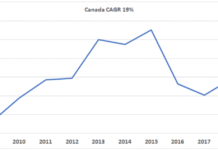Proposition 87 sure got a lot of attention in the past few months, not least because high-profile venture capitalist (and clean tech enthusiast) Vinod Khosla threw his full weight behind it. Proposition 87 would have created a tax set at between 1.5% and 6% (depending on the price of the barrel of oil) on producers of oil extracted in California, and would have established, with the proceeds, a $4 billion fund to invest in alternative energy. Unfortunately for Khosla and his bunch, California voters defeated Proposition 87 at the ballot box on Tuesday. Unsurprisingly, this had no impact on the market value of the alternative energy sector on Wednesday. Unsurprisingly because California remains one of the hottest, if not the hottest, alternative energy spots in the world, Proposition 87 or not. Only a few weeks ago, the California Legislature passed bill SB107 requiring investor-owned utilities to achieve a 20% renewable electricity portfolio by 2011. This represents one of the most ambitious such targets in the world, moving the 20% goal, which already existed under another program, from 2017 to 2011. What’s more, SB107 allows, for the first time, trading of Renewable Energy Credits (RECs) between power producers, introducing a necessary layer of flexibility and efficiency in the system. This could be one of the most important such initiatives in the US, covering upwards of 10,000 MW. Beyond this, the US just moved ahead of Spain to become the single most attractive market for renewable energy in the world according to the Q3 2006 edition of the Ernst & Young Renewable Energy Country Attractiveness Index (warning, PDF). One of the key factors outlined by Ernst & Young in awarding the whole nation the top spot is the recently-passed AB 32 (warning, PDF), California’s very own climate change legislation. When looking at the US as an alternative energy market, California weighs more than any other jurisdiction, not least because of the sheer size of its economy. So the alternative energy investor really doesn’t need to worry about Proposition 87. It would have been, in the long run, a drop in the bucket. California is on the right track, and other states will surely follow – set the appropriate regulatory framework with the right price signals, and cunning investors and smart clean tech entrepreneurs will do the rest.








